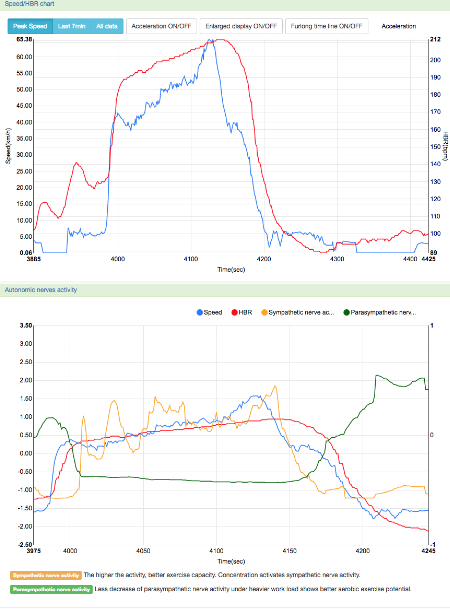Autonomic Analysis (sympathetic & parasympathetic nerve)
Indication of stressed, relaxed condition through autonoic chart
Sympathetic nerves becomes active under activity, tension, stress condition, while parasympathetic nerver becomes active during recovery process or calm relaxed condition. Under heavy exercise burden in the training course, The sympathetic nerve activity sharply increased, while the parasympathetic nerve becomes sharply active during the recovery process after post-exercise.
If carry over fatigue is heavy due to heavy exercise burden, the sympathetic nerve becomes reactive again even after parasympathetic nerve becomes active during recovery phase. Therefore by monitoring sympathetic and parasympathetic nerve activities, mental and fatigue condition (stressed, relaxed, calm, exhausted etc) can be observed.
During training process of the racehorses, training effects improve resistance against cardiopulmonary burden and it reflects activity of parasympathetic nerve. It is recognized that parasympathetic nerve activity becomes sharper during recovery phase after post-exercise and therefore heart rate decrease curve becomes sharper.
Horsecall provides sympathetic and parasympathetic nerve activity chart together with speed and heart beat rate curves. Sympathetic nerve activity curve indicate how focused racehorse is during training and also how actively responded. Also parasympathetic nerve curve after post-exercise phase indicates how good recovery of racehorse is. Trainer or ridder can review racehorse responses during work-out.
If parasympathetic nerve did not sharply activated during post-exercise phase, it indicates exercise burden is heavier than horse's capacity or racehorse has carry over fatigue. By reviewing othe paramter such as heart beat interval value, horse condition can be properly evaluated.

